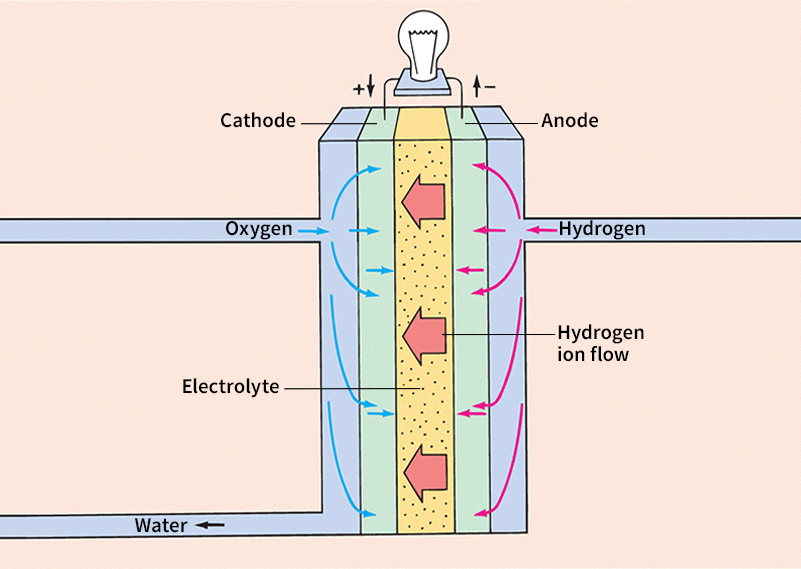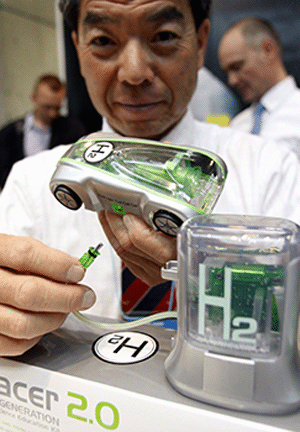Automakers Join Forces to Develop Fuel Cell Technology
January 28, 2013
Automakers Ford Motor Company, Renault-Nissan, and Daimler AG announced today that they would work together to develop a fuel cell system for use in vehicles that will give off no emissions (pollutants). (Ford is based in Dearborn, Michigan; Renault-Nissan is a French-Japanese alliance; and Daimler AG is a Germany company that manufactures Mercedes Benz.) The three automakers have scheduled the launch of “the world’s first affordable, mass-market fuel cell car” by 2017. Forms of transportation, such as automobiles, airplanes, ships, and trains, are the leading source of air pollution in most industrial nations. Fuel cell powered vehicles would solve much of this problem.
The plan is to develop a single hydrogen electric fuel system that can be used on vehicles produced by all three companies. Vehicles powered by fuel cells generate electric power from hydrogen and oxygen, and emit only water vapor. “Working together will significantly help speed this technology to market at a more affordable cost to our customers,” stated Raj Nair, vice president of global product development at Ford. “We will all benefit from this relationship, as the resulting solution will be better than any one company working alone.”

A fuel cell has two electrical terminals called electrodes—the anode and the cathode. In the fuel cell shown here, hydrogen gas (H2) is fed to the anode. There, the hydrogen undergoes a process called oxidation, which releases hydrogen ions and electrons. The hydrogen ions can pass through the electrolyte that separates the electrodes, but the electrons cannot. The electrons instead flow to the cathode through a circuit outside the cell, thus powering the light bulb. At the cathode, oxygen gas (O2) reacts with these electrons and the hydrogen ions that have passed through the electrolyte, producing water and some heat as by-products. (World Book diagram by Linda Kinnaman)
German automaker BMW and Japanese carmaker Toyota have also joined forces to develop hydrogen fuel cell technology. All of the companies are encouraging others–possibly oil companies with existing gas stations–to built the necessary refueling stations.

A man uses a model car powered by a fuel cell to demonstrate how the car plugs into a hydrogen fueling station. (© Kim Kyung-Hoon, Reuters/Landov)
Additional World Book articles:
- Electric car
- Hybrid car
- The Big Three Roll Again (a special report)
- Clearing the Way for a Hydrogen Economy (a special report)
- New Currents in Battery Technology (a special report)


